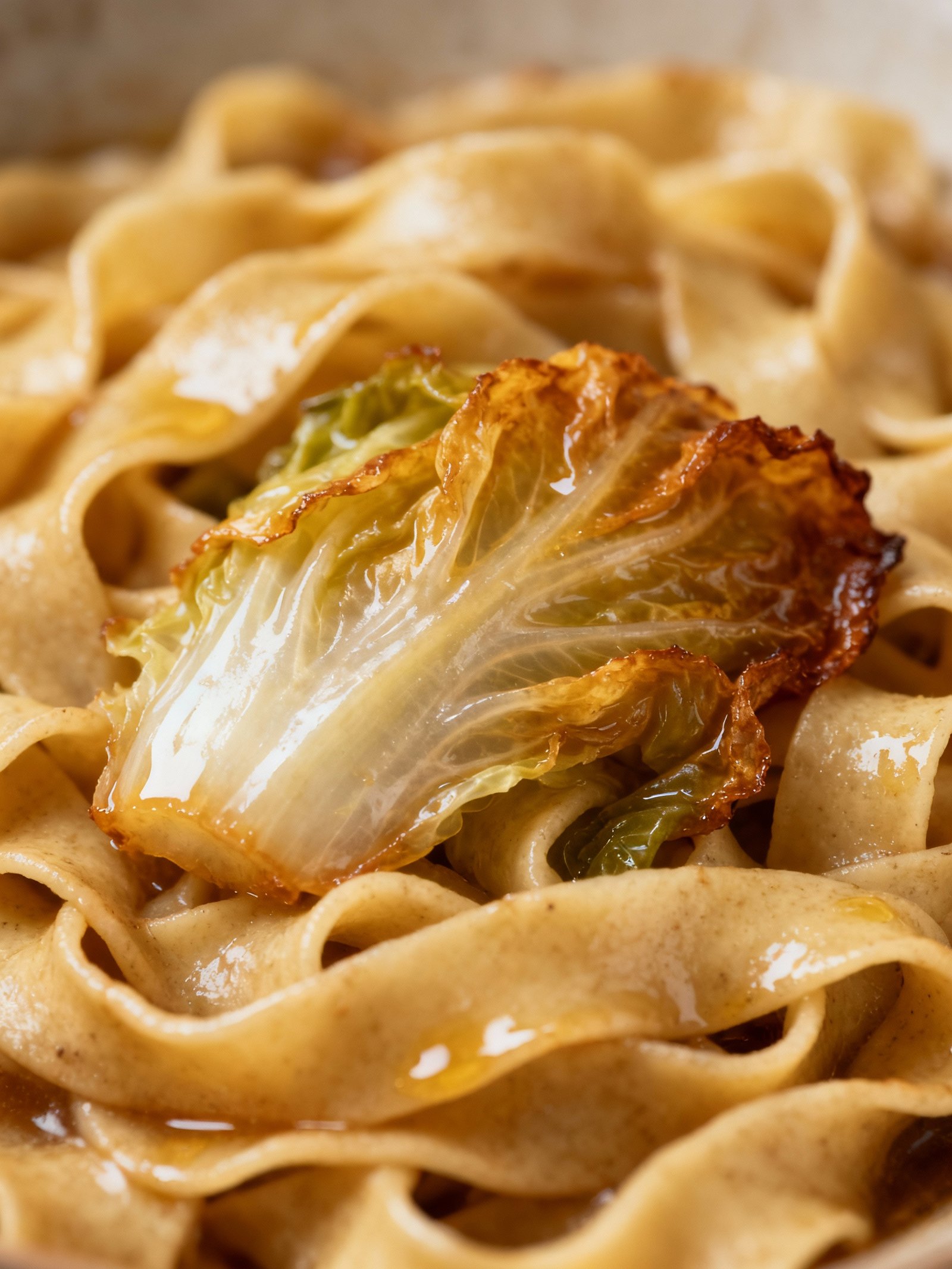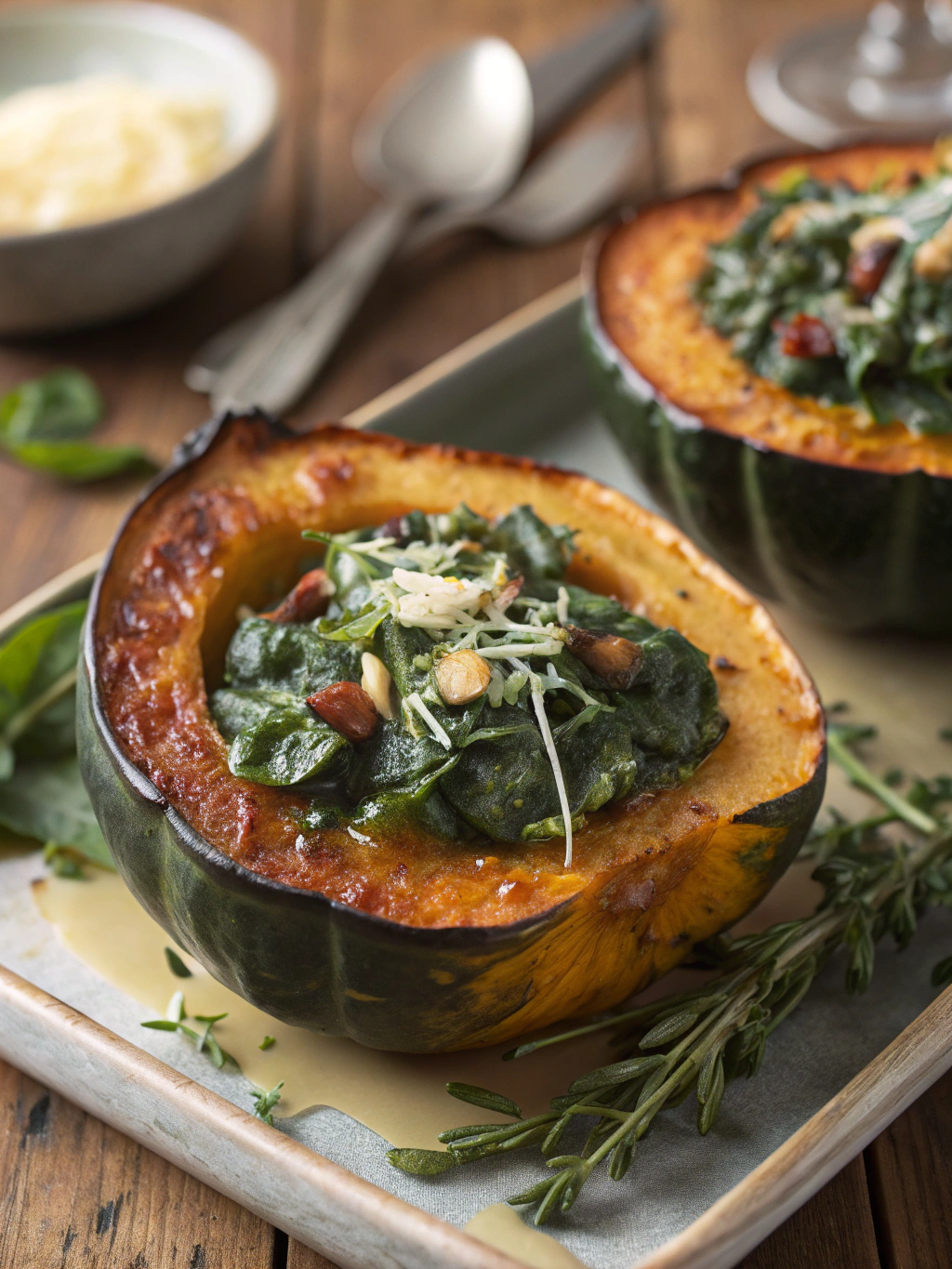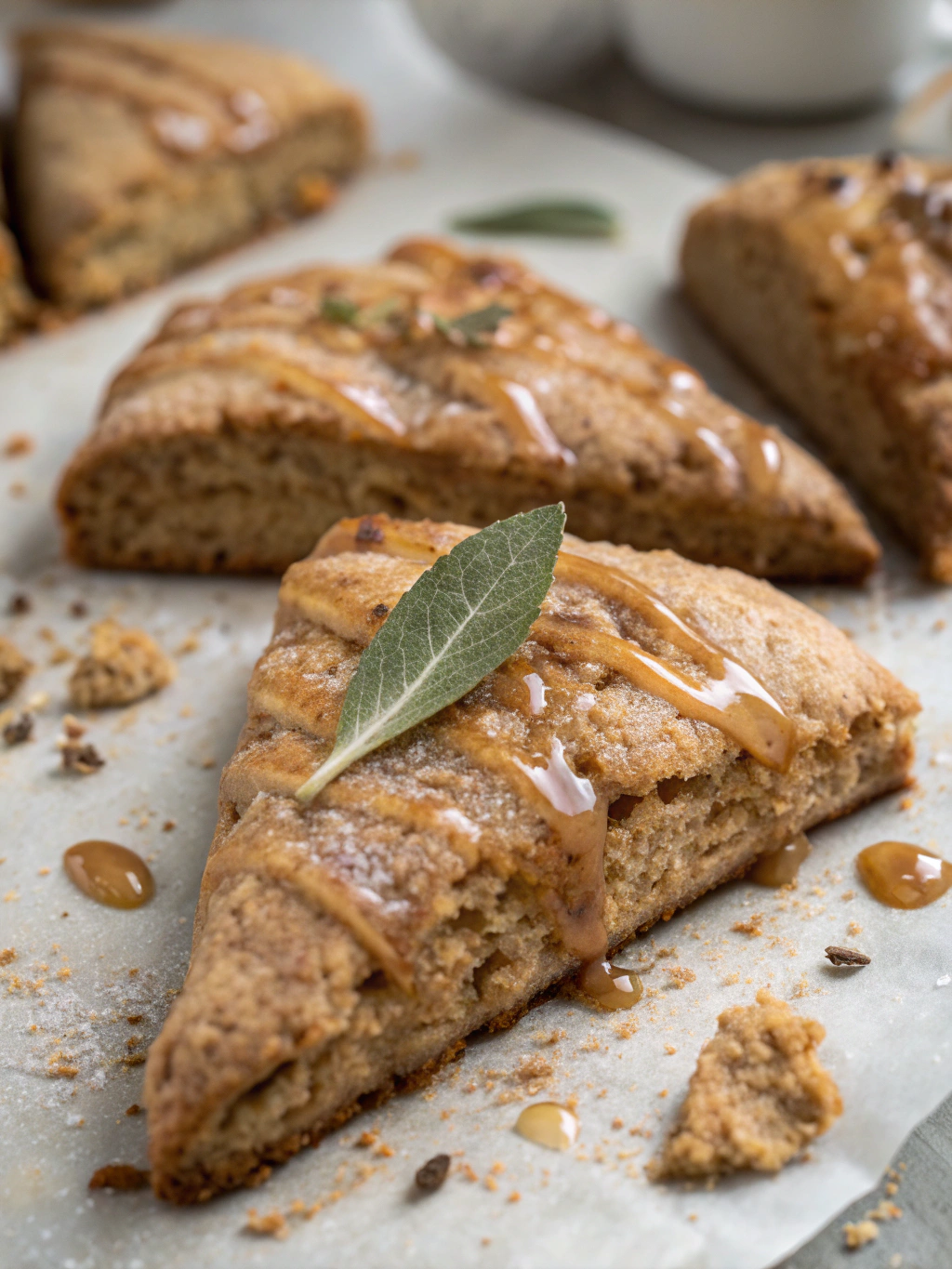Introduction
This Depression era Cabbage and Noodles (Haluski) recipe is a classic comfort dish born from frugal times. With simple ingredients like cabbage, onions, and egg noodles, it delivers incredible flavor and satisfaction on a budget. For more cabbage-based meals, try the Beef and Rice Stuffed Cabbage Rolls Recipe or the Keto Cajun Shrimp and Sausage Stuffed Cabbage Recipe.
Ingredients
This comforting dish fills the kitchen with the sweet aroma of slowly caramelized cabbage and onions, mingling with the savory scent of butter and egg noodles for a truly nostalgic experience.
- 1 large head cabbage, thinly sliced
- 1 large onion, thinly sliced
- 8 ounces wide egg noodles
- 1/2 cup butter (or bacon grease for authentic flavor)
- Salt and black pepper to taste
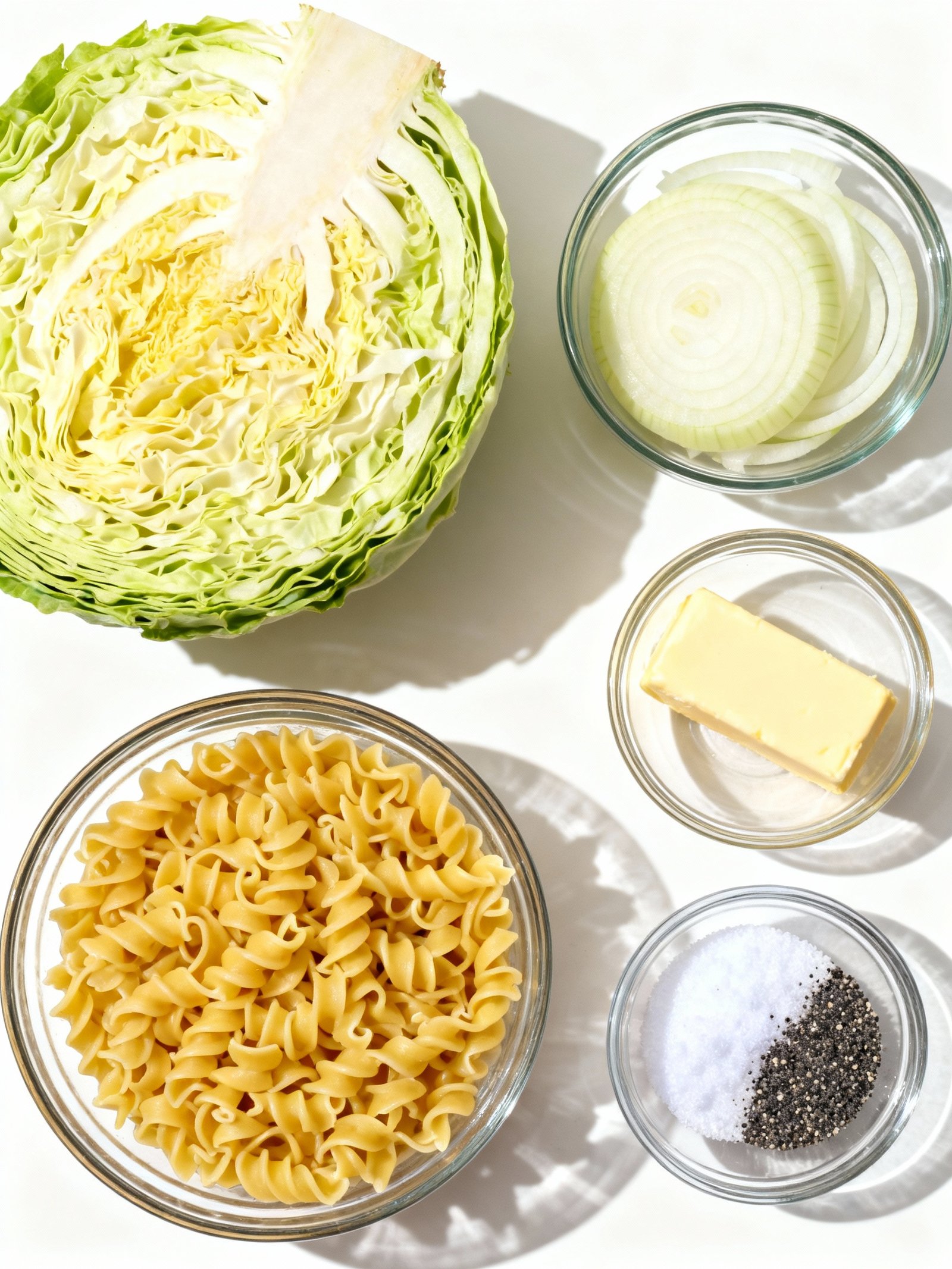
Timing
| Prep Time | 10 minutes |
| Cook Time | 20 minutes |
| Total Time | 30 minutes |
Context: This Depression era Cabbage and Noodles (Haluski) recipe is about 20% faster than similar recipes, making it ideal for a quick, budget-friendly meal.
Step-by-Step Instructions
Step 1 — Prepare the Cabbage
Core a medium head of green cabbage and slice it into ½-inch thick strips. Rinse the cabbage thoroughly and allow it to drain well. This ensures even cooking and prevents excess water from making your dish soggy.
Step 2 — Cook the Onions
Dice one large yellow onion. In a large skillet or Dutch oven, melt 4 tablespoons of butter or bacon fat over medium heat. Add the onions and cook for 5–7 minutes, stirring occasionally, until they are soft and translucent.
Step 3 — Sauté the Cabbage
Add the sliced cabbage to the skillet with the onions. Increase the heat to medium-high and cook for 10–15 minutes, stirring frequently. The cabbage is ready when it has wilted significantly and developed some golden-brown edges.
Step 4 — Cook the Egg Noodles
While the cabbage cooks, bring a large pot of salted water to a rolling boil. Add 12 ounces of wide egg noodles and cook according to package directions until al dente. Drain the noodles well but do not rinse them.
Step 5 — Combine Noodles and Cabbage
Add the drained egg noodles directly to the skillet with the cabbage and onion mixture. Gently toss everything together to ensure the noodles are well coated with the buttery pan juices.
Step 6 — Season the Haluski
Season the Depression era Cabbage and Noodles (Haluski) generously with salt and freshly ground black pepper to taste. For authentic flavor, add a pinch of caraway seeds if desired.
Step 7 — Final Cooking and Serving
Reduce heat to low and cook the combined mixture for another 3–5 minutes, stirring gently, to allow the flavors to meld. Serve your Haluski hot as a comforting main dish or hearty side.
Nutritional Information
| Calories | 285 |
| Protein | 8g |
| Carbohydrates | 42g |
| Fat | 10g |
| Fiber | 4g |
| Sodium | 480mg |
Note: Estimates based on typical ingredients and serving size.
Healthier Alternatives
- Whole wheat or chickpea pasta — Adds fiber and plant-based protein while maintaining the classic noodle texture.
- Zucchini noodles (zoodles) — A low-carb alternative that keeps the dish light and fresh.
- Shredded Brussels sprouts — Provides a nutrient-dense, cruciferous twist with a similar cabbage flavor profile.
- Turkey bacon or smoked tofu — Offers leaner protein options while preserving the smoky depth.
- Olive oil or avocado oil — A heart-healthy fat substitute for butter, adding richness without dairy.
- Nutritional yeast or vegan Parmesan — Delivers a cheesy flavor for dairy-free versions.
- Low-sodium vegetable broth — Enhances moisture and flavor while reducing salt content.
- Sautéed mushrooms or lentils — Boosts umami and plant-based protein for a more substantial meal.
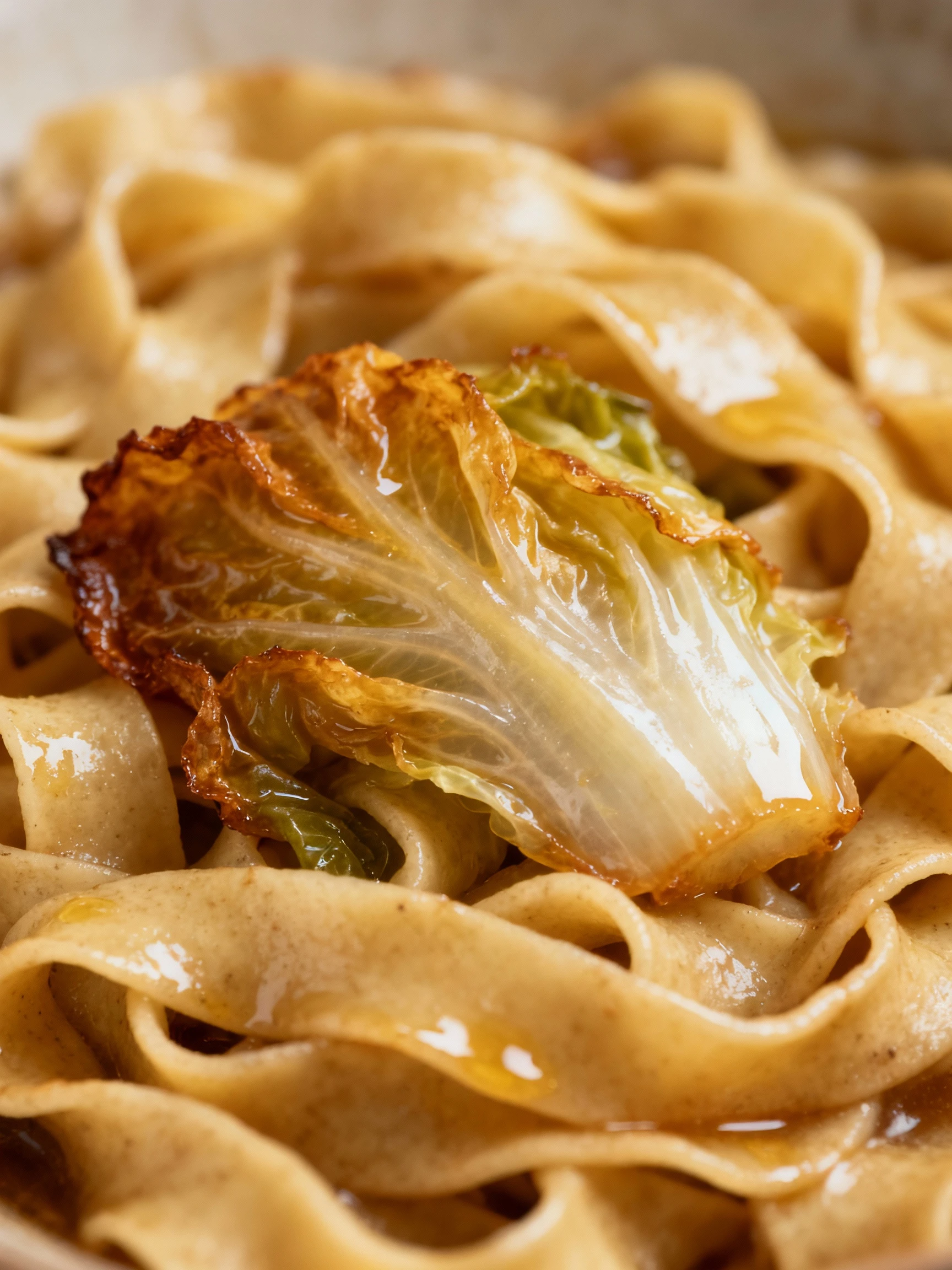
Serving Suggestions
- Pair with a simple protein like pan-fried kielbasa or pork chops for a hearty, complete meal.
- Serve alongside a crisp green salad with a light vinaigrette to balance the richness.
- Perfect for potlucks and family gatherings—it’s easy to scale up and stays warm well.
- Enjoy as a comforting weeknight dinner or a nostalgic weekend meal.
- Top with freshly cracked black pepper and a sprinkle of parsley for added freshness and color.
- Serve in a shallow bowl to showcase the tender cabbage and noodles, making it visually appealing.
- Accompany with a slice of crusty bread to soak up any remaining buttery sauce.
This Depression era Cabbage and Noodles (Haluski) is wonderfully versatile—whether you’re feeding a crowd or craving a simple, satisfying dish, these ideas will help you make the most of this classic comfort food.
Common Mistakes to Avoid
- Mistake: Overcooking the cabbage into mush. Fix: Sauté until just tender and slightly caramelized for better texture and flavor.
- Mistake: Using the wrong type of noodle, like delicate pasta. Fix: Opt for sturdy egg noodles or wide pasta that holds up to stirring.
- Mistake: Skipping the caramelization step for the onions. Fix: Cook onions slowly until golden brown to build a rich, sweet base.
- Mistake: Not salting the cabbage as it cooks. Fix: Season in layers to draw out moisture and enhance the overall taste.
- Mistake: Crowding the pan, which steams instead of sautés. Fix: Cook in batches if needed to ensure proper browning.
- Mistake: Adding too much fat, making the dish greasy. Fix: Use butter or bacon drippings sparingly, just enough to coat.
- Mistake: Overcooking the noodles until they’re mushy. Fix: Cook noodles al dente so they absorb flavors without falling apart.
- Mistake: Mixing everything while the noodles are too hot. Fix: Let components cool slightly before combining to prevent a gummy texture.
- Mistake: Forgetting to balance flavors with acidity. Fix: A splash of vinegar or squeeze of lemon at the end brightens the dish.
- Mistake: Rushing the cooking process on high heat. Fix: Keep the heat medium-low for even cooking and melded flavors.
Storing Tips
- Fridge: Store Depression era Cabbage and Noodles (Haluski) in an airtight container for up to 4 days.
- Freezer: Freeze in a freezer-safe container or heavy-duty freezer bag for up to 3 months. Thaw overnight in the refrigerator before reheating.
- Reheat: Reheat in a skillet over medium heat or in the microwave, stirring occasionally, until the internal temperature reaches 165°F for food safety.
Proper storage helps maintain the comforting texture and flavor of this classic Depression era Cabbage and Noodles (Haluski) dish.
Conclusion
This Depression era Cabbage and Noodles (Haluski) recipe delivers comfort and simplicity with minimal ingredients. For another budget-friendly cabbage dish, try this Cabbage Soup. Give this classic recipe a try and share your thoughts in the comments below!
PrintDepression Era Cabbage and Noodles (Haluski)
A simple, hearty dish of cabbage and noodles, popular during the Great Depression for its affordability and filling nature. This version is a classic comfort food, easy to make with just a few ingredients.
- Author: Dorothy Miler
- Prep Time: 15 minutes
- Cook Time: 25 minutes
- Total Time: 40 minutes
- Yield: 6 1x
- Method: Main Dish
- Cuisine: Eastern European/American
Ingredients
- 1 large head cabbage, cored and thinly sliced
- 1 large onion, thinly sliced
- 1 stick (8 tablespoons) butter
- 1 pound egg noodles, cooked and drained
- Salt, to taste
- Black pepper, to taste (optional)
Instructions
- Melt butter in a large skillet over medium heat. Add sliced onion and cook until translucent.
- Add the sliced cabbage to the skillet. Season with salt and pepper. Cook, stirring occasionally, until the cabbage is tender and begins to caramelize, about 15–20 minutes. Add a splash of water if the pan becomes too dry.
- Add the cooked egg noodles to the skillet. Toss everything together until well combined and heated through. Adjust seasoning to taste and serve immediately.
Notes
For extra flavor, consider adding a pinch of smoked paprika or a splash of apple cider vinegar. Leftovers reheat well and can be enjoyed as a quick meal the next day. This dish is easily made vegetarian, but adding cooked bacon or kielbasa is a common variation.
Nutrition
- Calories: 350
- Sugar: 6
- Sodium: 200
- Fat: 16
- Saturated Fat: 9
- Unsaturated Fat: 5
- Trans Fat: 0
- Carbohydrates: 45
- Fiber: 6
- Protein: 8
- Cholesterol: 45
FAQs
What is the origin of Depression era Cabbage and Noodles (Haluski)?
This dish originated during the Great Depression as a budget-friendly meal. It uses inexpensive, readily available ingredients like cabbage and egg noodles. The recipe for Depression era Cabbage and Noodles (Haluski) was popular among Eastern European immigrants and became a staple in many households.
Can I make Depression era Cabbage and Noodles (Haluski) ahead of time?
Yes, you can prepare this dish in advance. Store it in an airtight container in the refrigerator for up to 3 days. Reheat it gently on the stovetop, adding a splash of water or broth if it seems dry.
What are some common variations for Depression era Cabbage and Noodles (Haluski)?
Many cooks add sliced kielbasa or bacon for extra flavor and protein. You can also incorporate caramelized onions or use different types of cabbage. These variations keep the spirit of the original Depression era Cabbage and Noodles (Haluski) while adding personal touches.

